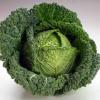-
Welcome to the eG Forums, a service of the eGullet Society for Culinary Arts & Letters. The Society is a 501(c)3 not-for-profit organization dedicated to the advancement of the culinary arts. These advertising-free forums are provided free of charge through donations from Society members. Anyone may read the forums, but to post you must create a free account.
Fragrant Jasmine rice
-
Similar Content
-
Rinsing rice
By lindag,
- 16 replies
- 3,495 views
-
Rice Varieties 1 2
By anil,
- 39 replies
- 11,614 views
-
Zojirushi rice cookers 1 2 3 4 8
By stephen129,
- 187 replies
- 58,538 views
-
- 37 replies
- 17,032 views
-
- 165 replies
- 57,075 views
-
-
Recently Browsing 0 members
- No registered users viewing this page.






Recommended Posts